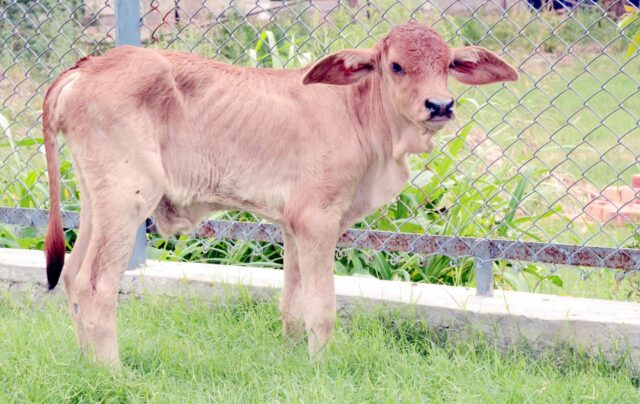
Ludhiana: In a major achievement, Guru Angad Dev Veterinary and Animal Sciences University, (GADVASU) Ludhiana scientists produced elite female Sahiwal calf following transfer of embryo produced by ovum pick up & in vitro fertilization (OPU IVF) technique. Dr. Inderjeet Singh, Vice-chancellor, GADVASU congratulated the ETT scientists, Drs. Narinder Singh and Gurjot Kaur Mavi for producing first OPU IVF calf in Punjab state. So far, only a few labs have been able to standardize and successfully produced live calves using this technique in India. The GADVASU scientists have established 37 pregnancies using OPU IVF embryos from Sahiwal cows which are due for calving in the coming time.
In the present case, the eggs were collected from an elite Sahiwal cow having production potential of more than 4000 kg milk per lactation and sex sorted semen from high pedigreed Sahiwal bull was used for IVF. The embryos produced were implanted into the uterus of crossbred cows used as surrogate dams on day 7 of estrous cycle resulting in the birth of elite Sahiwal calf after 9 months, the calf is healthy and doing well. Previously, the multiple ovulation and embryo transfer involving superovulation technique has been used to produce more than 200 HF and 73 Sahiwal calves by the university.
Dr. RS Grewal, Director, Livestock Farms informed that the project is funded under Rashtriya Gokul Mission Program by the department of Animal Husbandry, Dairying and Fisheries (DADF), Govt of India with main focus to propagate the superior genetics of indigenous cattle breeds.
Dr. JPS Gill, Director Research shared that the GADVASU has also successfully established pregnancies in buffaloes and exotic breeds of cattle like HF and Jersey using OPU IVF technique at university farm and at farmer’s level. The university is also providing OPU IVF services at field level to interested farmers. Dr Singh, Vice-chancellor emphasized on the need to multiply the elite buffaloes and dairy cattle at a faster rate using reproductive biotechniques to enhance milk production rather than waste resources on multiplying and feeding of low and medium yield dairy animals.

















